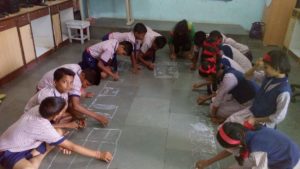
New Vision collaborated with Safe Kids Foundation, India as one of its project partners to jointly run the Safe Kids at Home, a home safety program to help prevent and reduce burns and scalds among children under 14 years old. The program will educate 325,000 students and 175,000 parents from 2015-2017, and aspires to bring together citizens and civic bodies who can lead the way in making Pune a model “Safe Kids at Home” city.
Safe Kids Worldwide is a nonprofit organization working to prevent childhood injury, the number one cause of death for children in the United States. Throughout the world, almost one million children die of an injury each year, and almost every one of these tragedies is preventable. Safe Kids works with an extensive network of more than 400 coalitions in the U.S. and with partners in more than 25 countries to reduce traffic injuries, drownings, falls, burns, poisonings and more. Since 1988, Safe Kids has helped reduce the U.S. childhood death rate from unintentional injury by 60 percent. Working together, we can do much more for kids everywhere.
Safe Kids Foundation India (SKFI) became a member of Safe Kids Worldwide in 2006 and works in close collaboration with Safe Kids Worldwide to improve the lives of children in India. SKFI works with non-profit organisations, governments and schools to promote awareness about deaths and injuries that can be prevented. The organisation initially focused on promoting road safety, and expanded to include home safety in 2015 through Safe Kids at Home.
• Heat burns (56%) are most prevalent type of burn, followed by friction burns (22%) and electrical burns (12%). Greater awareness about electric shocks among children and parents has led to lower incidence of electrical burns. According to general practitioners, fireworks are a top hazard, and their use needs to be monitored.
• Children living in slums report higher incidence of burns/scalds (57%), which could be due to undefined kitchen spaces. However, parents in these households overlook minor injuries, including burns/scalds, and do not perceive these as risks, indicating a need to educate both children and parents in this segment.
• In contrast, there is higher reporting of burn/scald injuries by SEC A/B parents indicating more time spent in supervision and greater sensitivity to even minor injuries.
• 49% children resorted to self-medication for burn injuries.
• Fire safety training is part of the curriculum in only 20% of schools, and 69% of training is theoretical, pointing to the need for increased experiential teaching.
• 27% parents do not educate children about fire risks.
• Usage (5%), and knowledge (2%) of fire fighting equipment are dismally low.
• Commissioned by Honeywell India and Safe Kids Foundation India, and conducted by IMRB International, the research covered 1,117 respondents, including parents, children under 14 years, general practitioners, and teachers. It included an equitable representation of SEC A, B, C and D/E households and slums in Pune.
